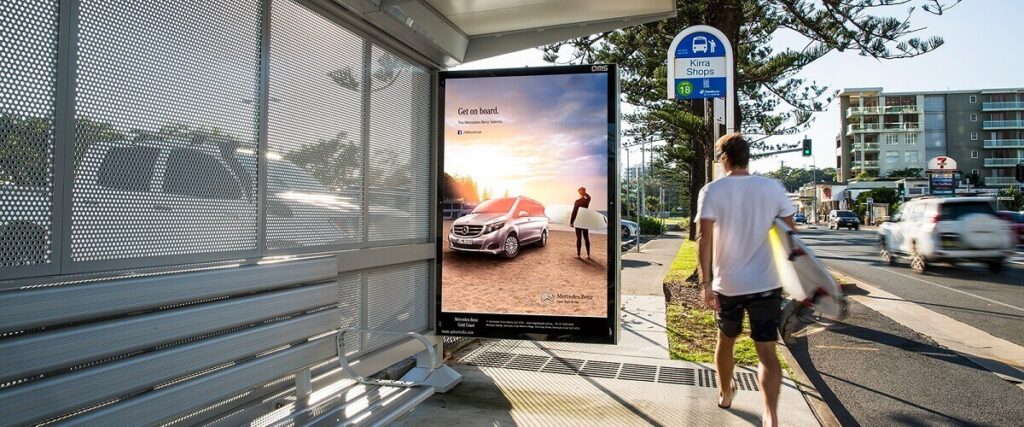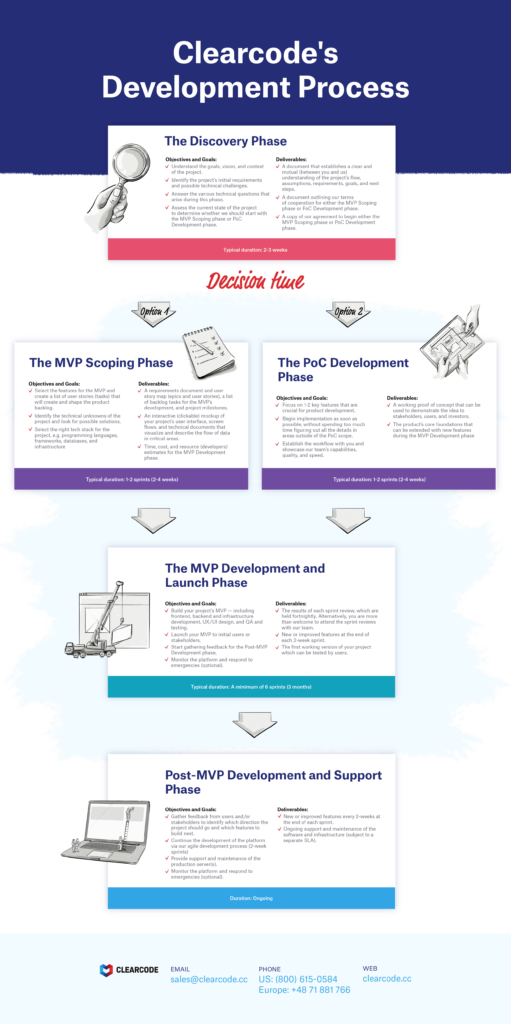In a scene from the 1982 film Blade Runner, a flying car is seen travelling through Los Angeles in the year 2019. To its right is a large digital advertisement on the side of a building displaying the words “Enjoy Coca-Cola”.

Did Blade Runner invent digital out-of-home (DOOH) advertising, or did the film simply foresee the natural and inevitable move from traditional OOH towards the digitized variation?
Of course, it’s the latter.
Just as it’s been the case with other traditional forms of advertising (e.g. digital audio), out-of-home advertising has moved from static images on posters to interactive media formats on digital signage and displays.
As the popularity of digital out-of-home advertising increases, it opens up a number of opportunities for companies wanting to build programmatic advertising products for this emerging space.
But what kinds of DOOH advertising platforms can you build? And how do you go about it?
We answer those questions and more in this article.
What Is Digital Out-Of-Home (DOOH)?
Digital out-of-home refers to advertisements displayed in public areas like billboards, trains and buses. It’s akin to traditional out-of-home (OOH) advertising, with the only difference being the digital element – DOOH ads are displayed on digital screens, often with an internet connection.

Source: Broadsign
How Does Programmatic DOOH Advertising Work?
Digital out-of-home advertising works similarly to traditional OOH, but includes many of the benefits that programmatic advertising has to offer. Because many digital displays are connected to the internet, DOOH ads can be transacted, served and displayed in the same way as display ads (e.g. banner ads on websites).
Also, because DOOH ads are shown on digital displays, they can be dynamic (e.g. change based on variables like the weather), provide interactive elements (e.g. via motion-detection devices) and offer measurement capabilities via bluetooth or Wi-Fi connections.
What Are the Main Business Use Cases of Building a Custom DOOH Advertising Platform?
Below are just some of the main business use cases and technological platforms that companies can build for the DOOH advertising space.
Sell the DOOH inventory: Due to the growth of DOOH advertising, companies can use software such as a supply-side platform (SSP) to facilitate the selling of available inventory (i.e. digital signage and displays), whether they own the inventory themselves or can access it.
Buy the DOOH inventory: Companies can also build media-buying tools such as demand-side platforms (DSPs) to allow advertisers to purchase available DOOH inventory programmatically from SSPs.
Provide secondary services: There are a number of secondary services that require technology to power them. Examples include analytics, measurement, and targeting. These services could operate as standalone platforms or could be added to existing AdTech platforms.
Why Should I Build a DOOH Advertising Platform?
Despite the growing number of AdTech vendors offering DOOH programmatic advertising, there are a number of advantages to building a custom DOOH ad platform:
DOOH Advertising Is Growing
Although internet advertising – which includes search, display, in-app, video, and social – still accounts for a large chunk of global ad spend, OOH advertising is on the rise. OOH ad spend reached $10 billion between 2017 and 2018.
This figure represents a yearly increase of 4%, with DOOH no doubt being one of the key drivers of this growth.
Digital Displays Are Cropping up Everywhere
Advances in technology are often the main reason for growth within a given industry, and this is certainly the case with DOOH.
Just like every other piece of technology, digital signage and displays have become more affordable over the years and are now replacing the traditional static displays found in public areas, such as shopping malls, retail stores, restaurants, airports, train and bus stations, and on the streets.
Apart from interactivity and measurement, DOOH delivers advertisers something that traditional OOH hasn’t been able to – scale.
Instead of displaying the same ad on one billboard for 30 days, advertisers can show multiple ads across many different digital displays thousands of times in the same period.
Opportunities for First Movers
Although DOOH has been around for well over a decade, there’s still a lot of technical challenges to solve, numerous opportunities within the advertising industry, and space for companies to establish themselves as first movers.
How Do I Build a Programmatic DOOH Advertising Platform?
Building a programmatic DOOH advertising platform is just like any other software-development project; there are many approaches you can take to build the platform and each company will have its own software-development process.
To give you a more concrete example, below is an overview of the process we follow when building advertising technology, including DOOH advertising platforms.

Here’s an overview of the main phases.
Discovery phase: Here, we learn more about your project; for example, we’ll find out what type of DOOH advertising platform you’d like to build and what the initial requirements are.
MVP scoping: If there are a lot of questions to answer about your DOOH platform, if your project’s scope is undefined and if you don’t have a lot of knowledge about this particular area of AdTech, we may suggest you start with our MVP scoping phase.
PoC development: If the scope is well defined but we still need to confirm a few key things, we may begin by developing a proof of concept of your DOOH ad platform.
MVP development: Once we’ve completed the MVP scoping or PoC development phase, we can start building your DOOH ad platform’s minimum viable product (MVP). Once we build your MVP, you can test it with initial users and showcase it to stakeholders.
Post-MVP development: In this stage, we’ll take the feedback that you’ve gathered from initials users and stakeholders and continue the development of your DOOH platform.
Takeaway
As more brands and advertisers struggle with problems like ad blockers, enhanced privacy features on web browsers, and ad fraud with digital display advertising, many will look for alternatives to get their message out to the masses, with DOOH advertising being a strong option.
And unlike Blade Runner that depicted the future of DOOH back in 1982, the real future of DOOH advertising is now.







